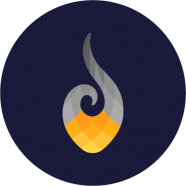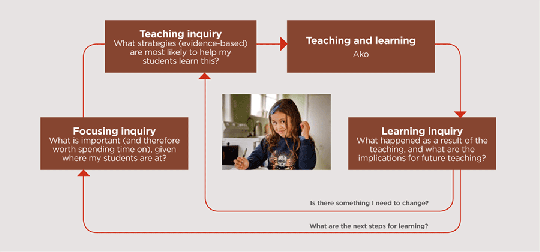Digital technologies implementation process
Four levels of implementation
Below are the action steps for the level your school is at in the implementation of digital technologies in the revised technology learning area.
To see an overview of all the levels go to digital technologies implementation support tool.
2020 ready

Download PDF:
2020 ready DT implementation support (PDF, 1 MB)
Making change visible
As the board of trustees and school leader, you have:
- digital technologies learning in your strategic goals and planning
- a plan to resource this change
- a plan to evaluate progress, which will include appropriate measures to determine students' development against the progress outcomes.
Your future direction for curriculum is visible to all
As the school leader / leadership team, the following apply.
You have informed parents, whānau, and the community about the change to the national curriculum and let them know how you plan to include this in your school’s curriculum.
You are trialling teaching the revised technology learning area in some classes across the school, and are creating connections to other learning so that it is cross-curricular. Teachers create learning experiences that connect ideas across the breadth of the curriculum. This includes teaching technology across learning areas and simultaneously developing key competencies: managing self, relating to others, participating and contributing, thinking, and using language, symbols, and texts.
You are connecting with parents, whānau, industry, and iwi and community contacts to look for real-life learning opportunities with students.
Continuing to get into the detail of the curriculum content and growing your own understanding
As the school leader / leadership team, you are:
- participating in professional development and support – and are encouraging others to keep growing (see digital technologies professional learning).
- encouraging all those teaching years 1–10 and middle leaders to access professional learning on the revised technology learning area.
- encouraging all those teaching years 11–13 to also access professional learning on the revised technology learning area. Current specialist technology teachers do have a leadership role to play in teaching students who wish to specialise further. Over time, all students will expect an integrated approach across their learning areas. This will need to build on what they have learnt in years 1–10.
As curriculum leaders, you:
- are mapping the progress outcomes across your school curriculum – this is helping to make connections across learning (see alert #6 below)
- have developed a teaching digital technologies curriculum content resource plan – using what’s set out in the progress outcomes as the guide
- monitoring teaching and learning to gauge effectiveness.
Alert #6
The progress outcomes are there to guide teaching and should not be used as a formal assessment tool. Progress outcomes give a roadmap for learning – and the journey is important. Make sure you are teaching the big ideas that are at the right level for your learners.
As this is new learning and a journey for all, we expect that teaching confidence and capability will grow as time goes on.
Supporting ongoing professional growth
As the leadership team / change leader, you have:
- checked how everyone is doing turning their professional development into effective practice and adjusted plans accordingly. You are encouraging teachers to use teaching as inquiry to support their thinking.
- encouraged your teachers to network internally and across schools and Kāhui Ako to support the curriculum change implementation journey.
- reported to the board about progress being made in curriculum development, effective teaching, and student progress.
Storytelling – how one school introduced digital technologies
Ohaewai Primary School and the Battle of Ōhaeawai
Ohaeawai Primary in Northland is a small, 160-student rural school. One of their classes has been set the challenge of discovering more about the famous Battle of Ōhaeawai – to find out more about it, and present their findings back to the school at the end of the term.
The learning objective is to see how the same event can be seen differently by different people. At the same time, the learners need to start thinking about how they could best present their story.
How digital technologies fit:
- step-by-step thinking process
- planning for the needs of the end user when telling their story
- considering the tools they have available to help them bring the story to life.
Field trips
The learners first visited the Museum of Waitangi to learn about the early navigators like Kupe, the early interactions between Māori and Europeans and events surrounding the Treaty signing – including the Battle of Ōhaeawai.
How digital technologies fit:
- refining initial ideas with increasing gathering of information
- storing and retrieving their work from cloud-based programmes.
Next, they visited the Carving Studio in the Waitangi Treaty Grounds, where they heard the stories of the battle that have been told in the carvings. They also learnt more about the Treaty of Waitangi signing.
How digital technologies fit:
- refining initial ideas to bring in new perspectives
- storing and retrieving their work from cloud-based programmes
- thinking how the two points of view fit with the overall plan.
Technological practice
Back in the class, the students gather their thoughts and ideas together in a working group. They start a storyboard that helps them with both their narrative and what tools they can use to bring their stories to life for their audiences.
How digital technologies fit:
- developing a step-by-step process for telling the story sequentially
- exploring digital tools available to help them tell the story – the tools they selected are all freely available online.
For ideas on digital technologies available see:
Once their plan of attack is agreed, the learners begin the fun part – bringing the story to life. The great thing is the range of tools available means there are choices for where learners’ interest or passions lie.
How digital technologies fit:
- developing a piece to camera where learners take the role of a news crew and presenter
- creating a traditional pā using Tinkercad design software
- animating a new output, using models the students have made.
Outcome development and evaluation
The big day arrives. After all that work, the learners are ready to present their story to a large audience. This includes their schoolmates, teachers, family and whānau.
How digital technologies fit
They have developed a presentation using Google slides that features their illustrations, 3D drawings, and video footage.
You might also like ...
Other stories of digital technologies curriculum content being introduced into teaching and learning see teaching snapshots.
Ideas on local curriculum and digital technologies watch the webinar recording – local curriculum projects and digital technologies.
Further support
For more information see: digital technologies questions and answers.
Quick links to professional support package:
Digital technologies and hangarau matihiko learning
Kia Takatū ā-Matihiko | National Digital Readiness Programme

